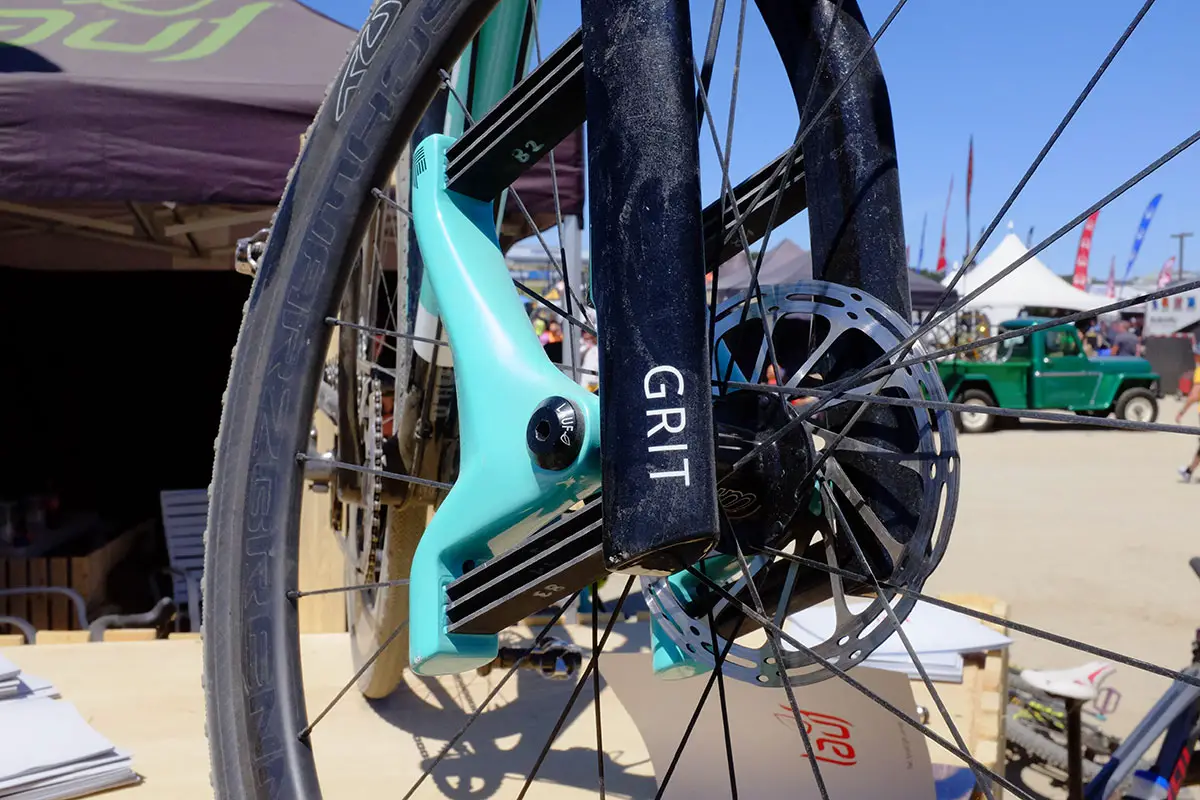In some ways, the Three Peaks Race, now in its 55th running this year, has moved with the times to reflect changes in technology in both bikes and the wider world. The old ‘timing’ bread tags of old have been replaced by electronic dibbers* and bikes are now allowed to run disc brakes – as a safety measure as well as for performance (as anyone trying to brake on wet rims down Ingleborough will attest). Racers can use carbon frames and tubeless tyres on carbon wheels and no longer have to struggle with toeclips. There are, however, some aspects of modern gear that the event will not accept, and the organisers’ definition of the cyclocross bike is still pretty rigid.


(* Riders used to be given a plastic ring with three bread bag tags on it with the rider number on. These were handed in to the Mountain Rescue marshals at the top of the three mountains to show that you’d been to that checkpoint (and to allow for missing riders to be accounted for). The modern version of the race uses orienteering ‘dibbers’ which allows a far more accurate tally of rider numbers and has the advantage of giving the riders split times for each of the peaks.)
It’s not quite as strict as the UCI World Cup rulings, but in its own way, there are some things that the event will not allow. And, to be honest, we respect that. After all, if you’re going to race what many riders regard as the world’s toughest (and longest-running) cyclocross race, you should be on a cyclocross bike. There are plenty of other events that will allow your hybrid interpretation of the sport in, so in keeping the bike definition strict, the organisers are helping preserve its heritage.


According to the event manual, here are the specifications:
14. The race is for CYCLO-CROSS BIKES WITH DROP HANDLEBARS ONLY
The use of mountain bikes and road bikes is prohibited. There will be an examination of bikes before the start and spot checks made throughout the race. A cyclo-cross bike is a road bike with cyclo-cross tubulars/tyres and low gears. Disc brakes are allowed. Bicycles must comply with these regulations:
● The structure of the bike connecting the saddle, pedals and forks shall be triangular
● The component parts must be tubes or profiles, the form of which is free from restriction. The minimum width shall be 25mm. The maximum width shall be 80mm for the frame and 50mm for the rear stays, forks and seat pillar.
● Wheels of the bike may vary in diameter between 70cm maximum and 55cm minimum, including the tyre. The width of the tyre cannot be more than 35mm.
● STRAIGHT HANDLEBARS AND SUSPENSION ARE NOT ALLOWED.
● The use of 27″ or 700mm wheels in mountain bike frames will not be allowed.
● Any rider running disc brakes must have the ability to maintain the brakes during the event.
● Competitors are reminded that British Cycling Regulations prohibit riders using on board camera devices. Any rider found using such a device may be subject to sanction by British Cycling.
● Commissaire’s decision will be final.
So, in summary – it needs to look like a cyclocross bike. It can be a carbon cyclocross bike, with fancy wheels, but it can’t be a mountain bike with ‘cross wheels crowbarred in. The tyres need to be less than 35mm in width and your handlebars can’t be flat (though it looks like they can be flared…)


We used our secret communication device to talk to the normally impossible to contact organiser, Mark Richmond, to clarify if modern short travel suspension devices like the new Lauf Grit forks would be allowed in future events. The answer was pretty definitive:
“No suspension will be allowed. John Rawnsley {the previous organiser} and I had a lengthy discussion and John also consulted with British Cycling. We feel the need to preserve the nature of the event and not to allow it to evolve into a MTB race, for example John banned flat bars when disc brakes became popular. Gravel is something else and not to be confused with CX so we won’t be allowing larger tyres in {either}.”
So, there you go. In case you were wondering. And as we’ve said already, given that you’re going to be lining up against old boys (and girls) doing their 10th, or 20th, or even 50th Three Peaks, some on the same bike that they raced in the ’60s, you don’t need technology. You just need to toughen up, buttercup.
Comments (2)
Leave Reply
Post Comment


Enjoyable read Chipps. I find myself frequently being asked to ‘defend’ the way that the ‘Peaks is a little backward-looking on the face of it. I love development of tech but I also love the fact that this race respects itself more than others. Proper Yorkshire.
One thing of note, too. This isn’t the just the oldest cyclocross race in the world, it’s the longest-lived bike race of any description in the UK. That also demands a bit of respect.
Enjoyable read Chipps. I find myself frequently being asked to ‘defend’ the way that the ‘Peaks is a little backward-looking on the face of it. I love development of tech but I also love the fact that this race respects itself more than others. Proper Yorkshire.
One thing of note, too. This isn’t the just the oldest cyclocross race in the world, it’s the longest-lived bike race of any description in the UK. That also demands a bit of respect.